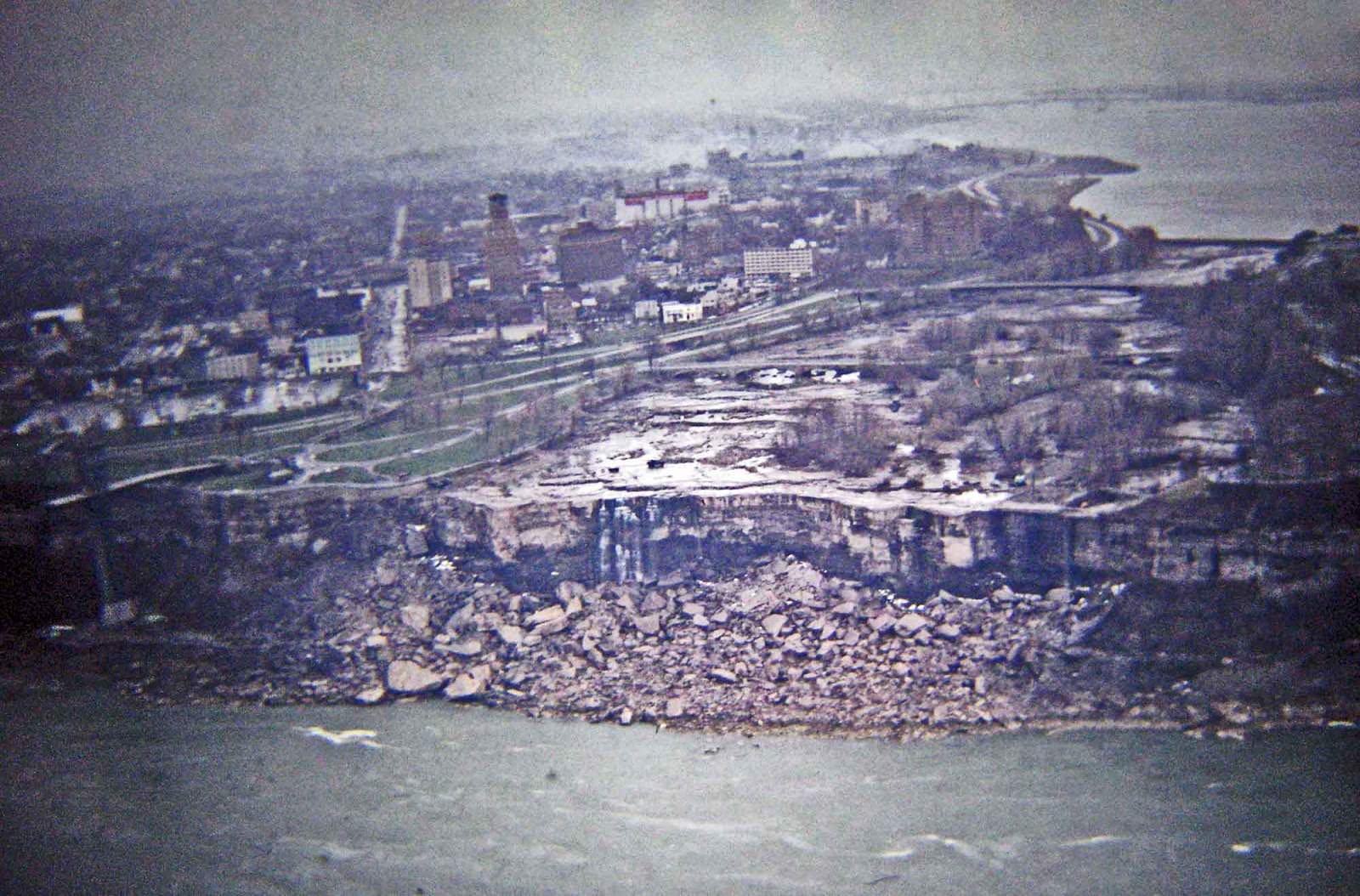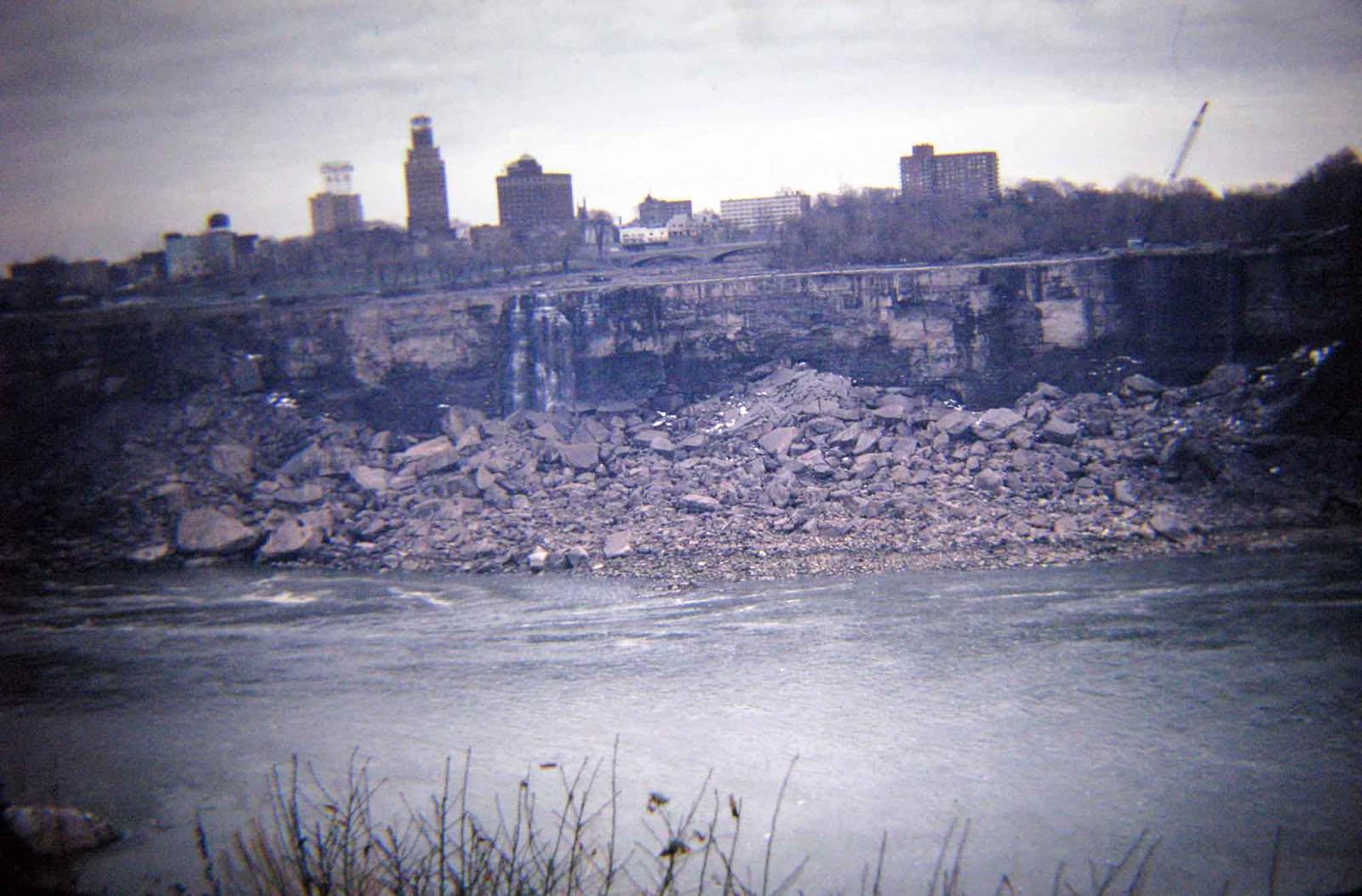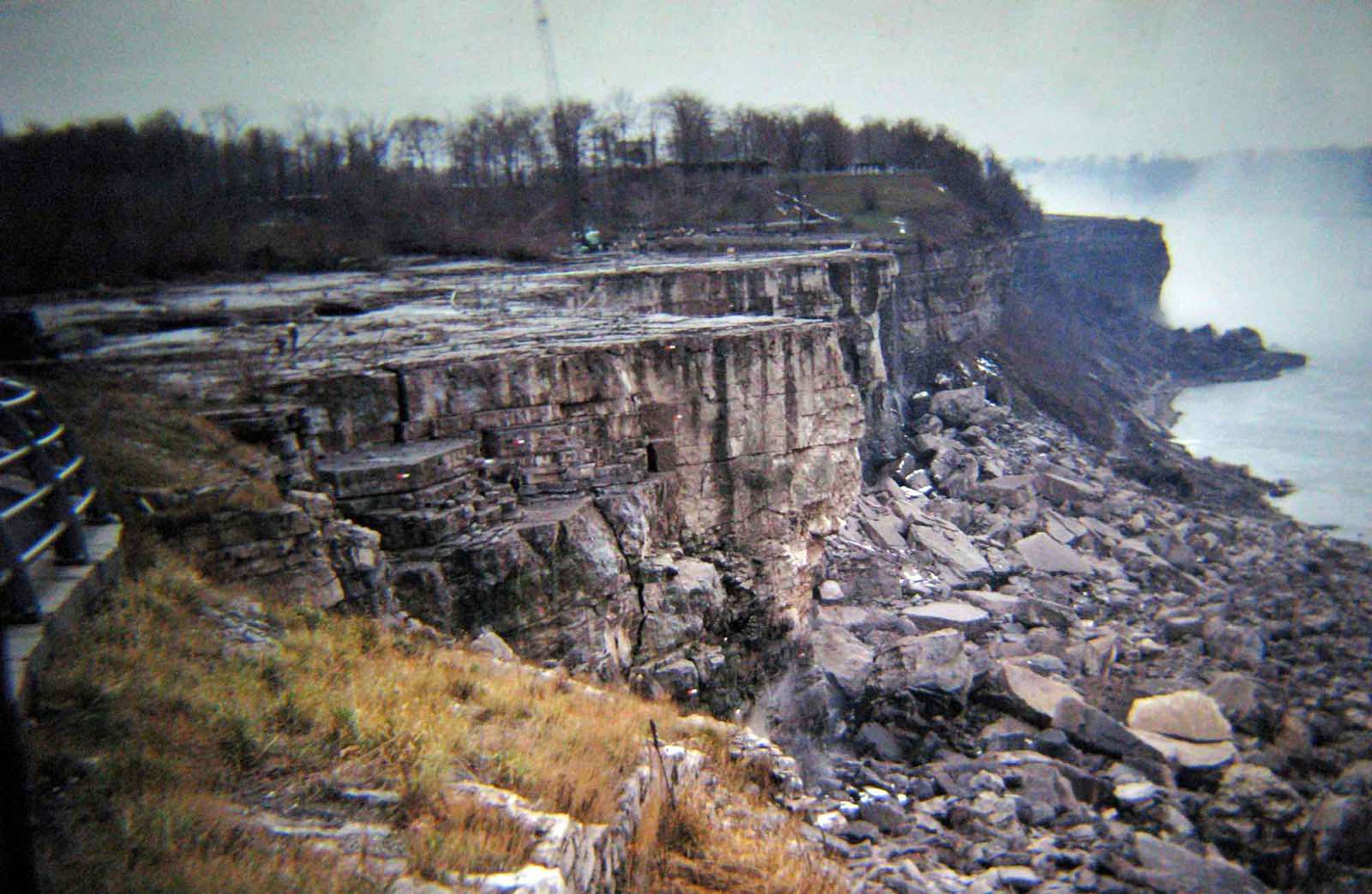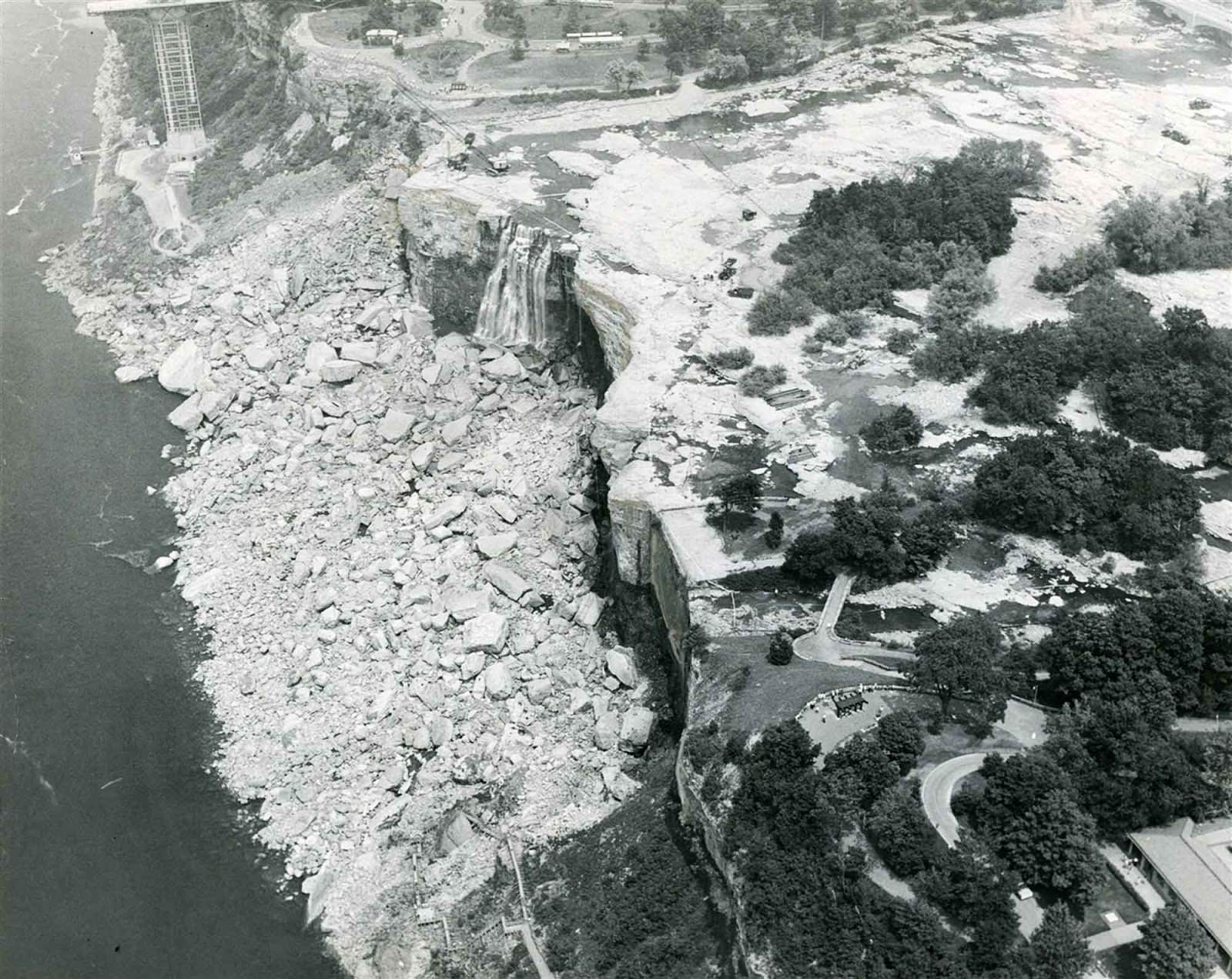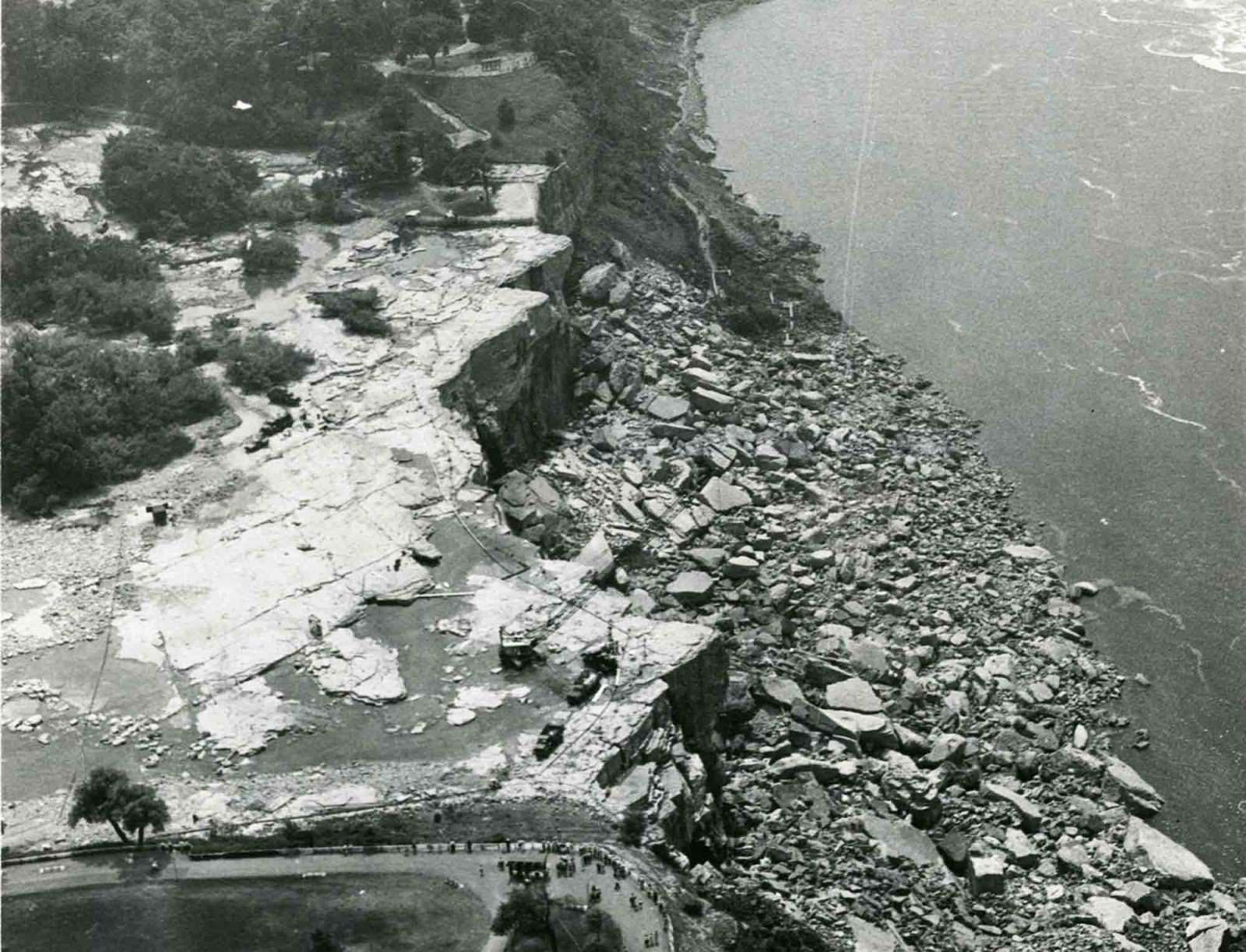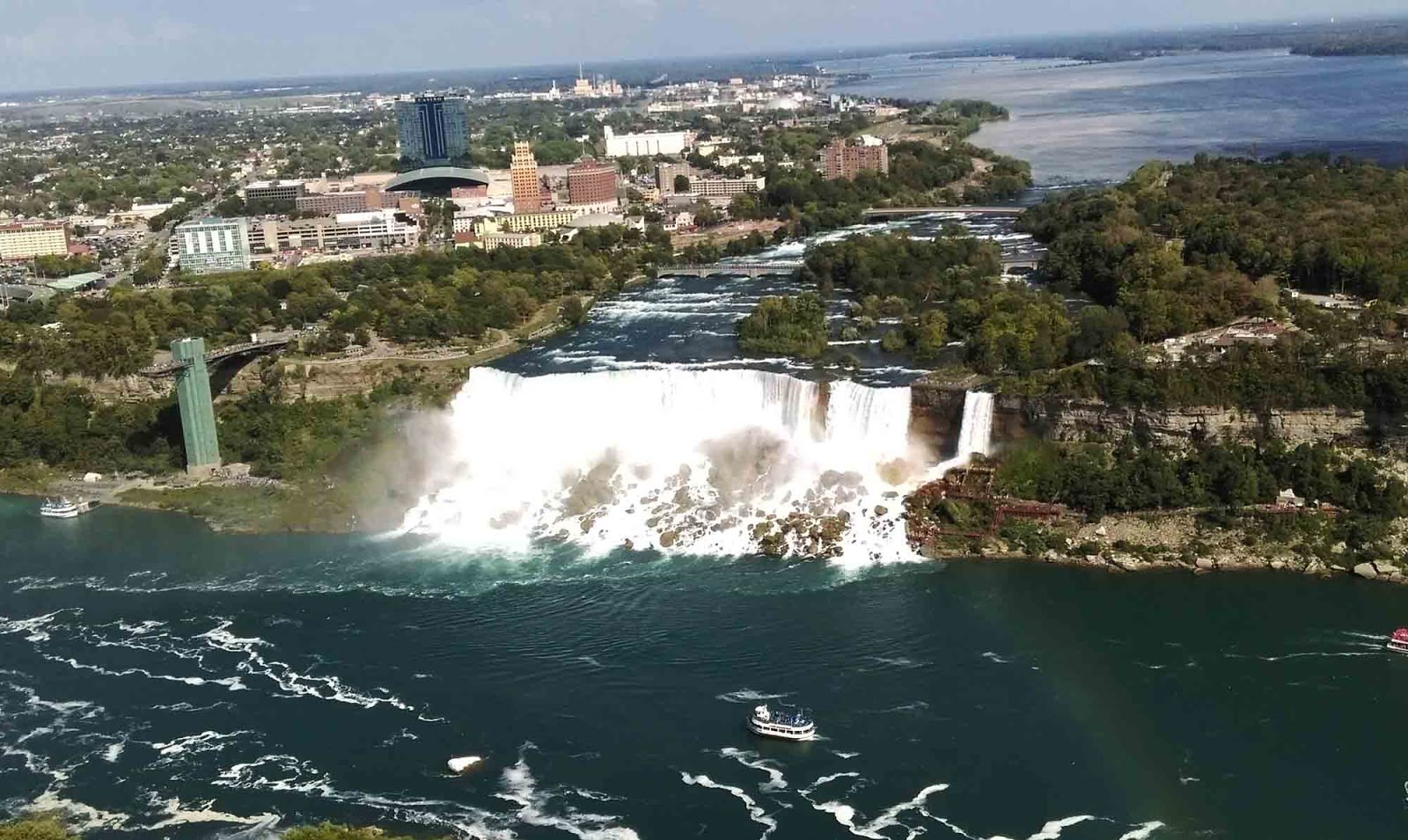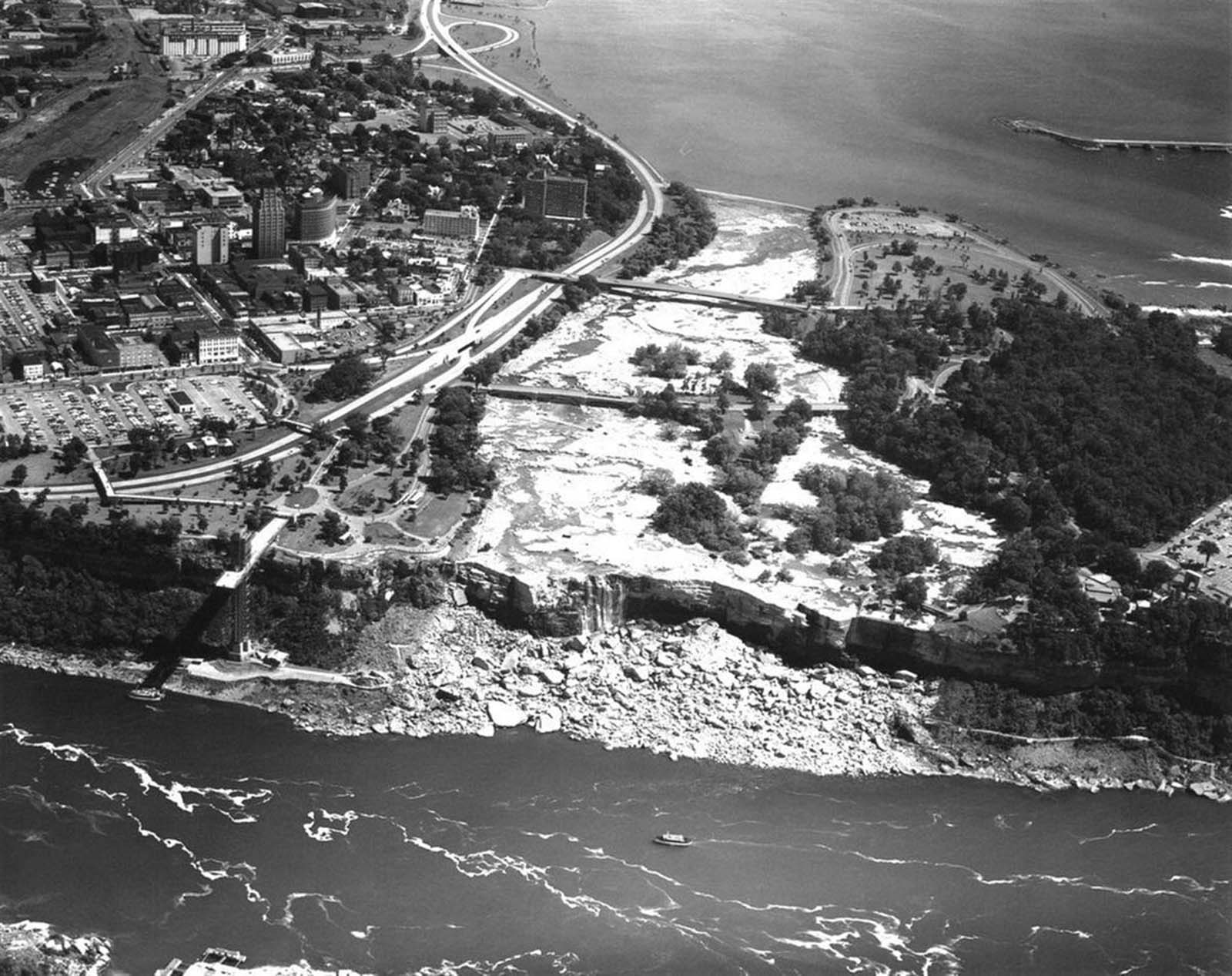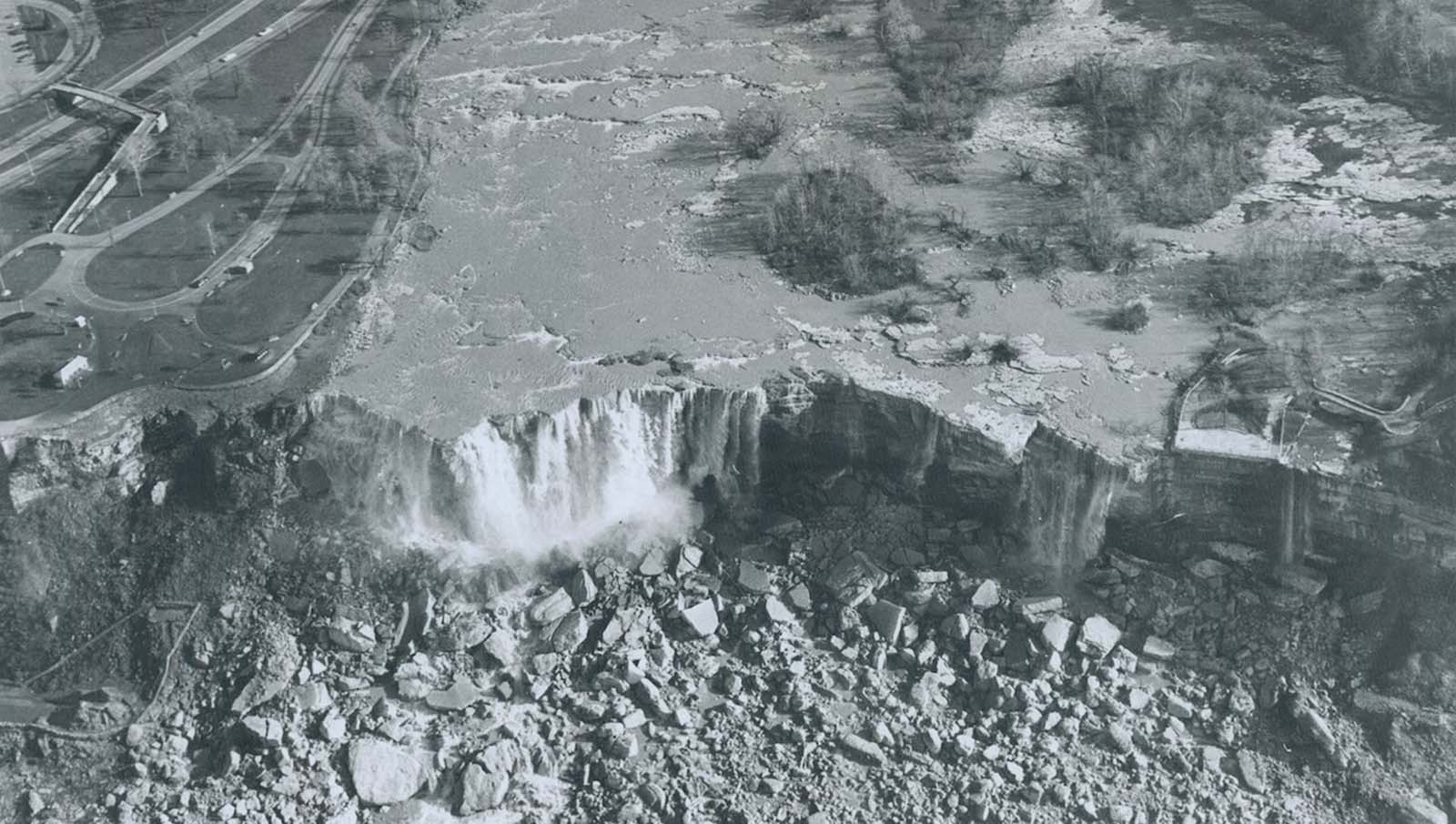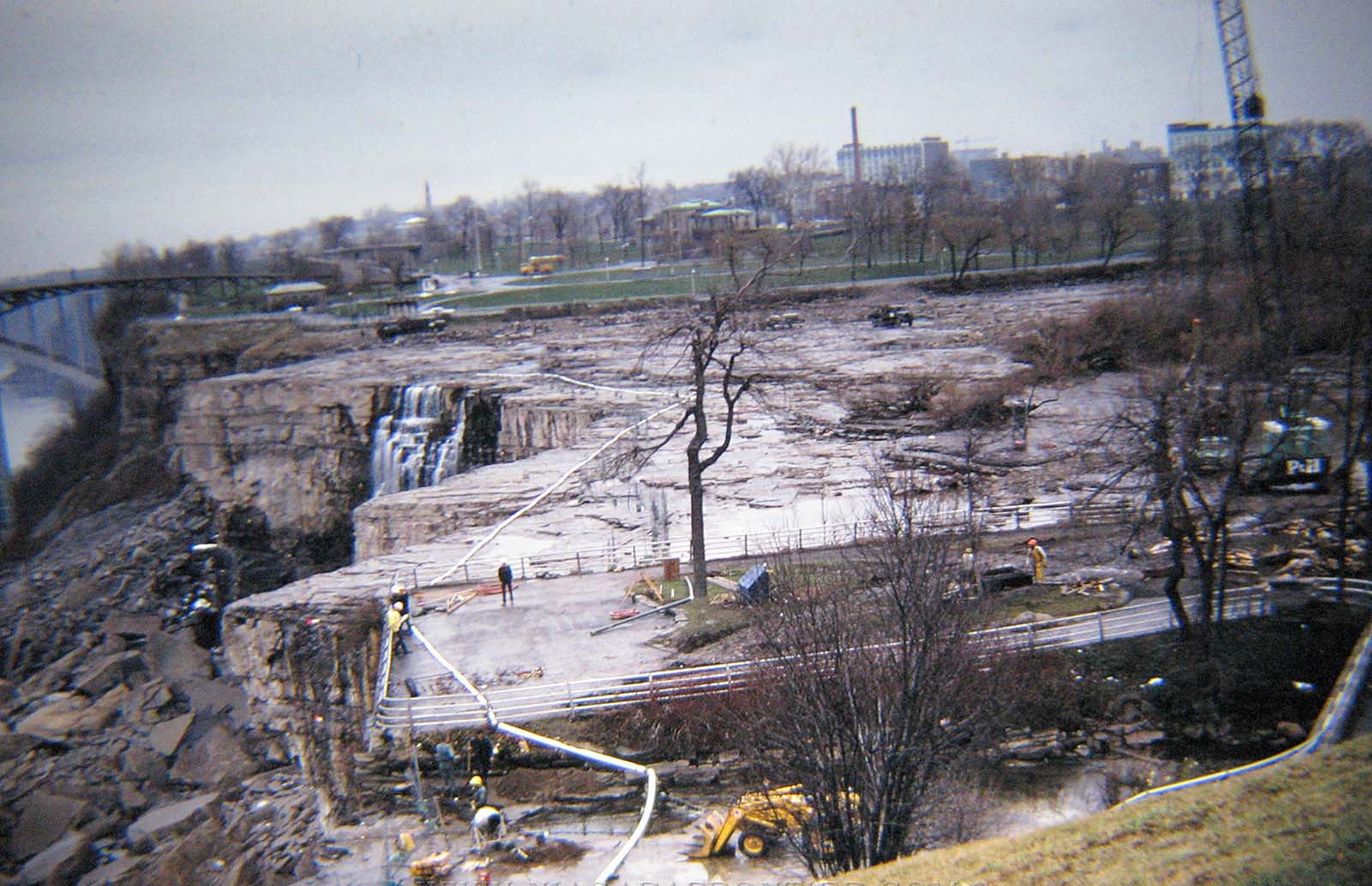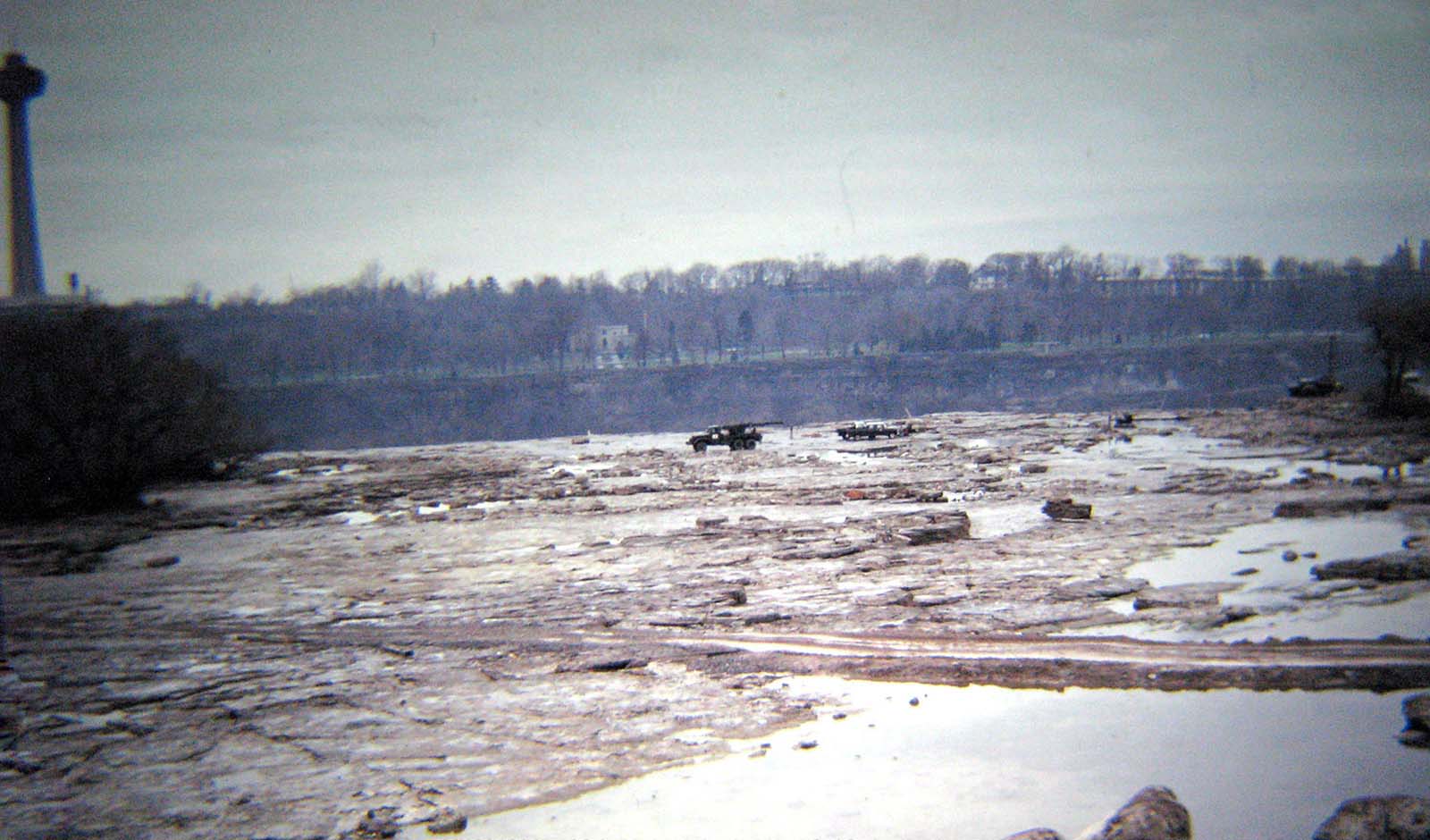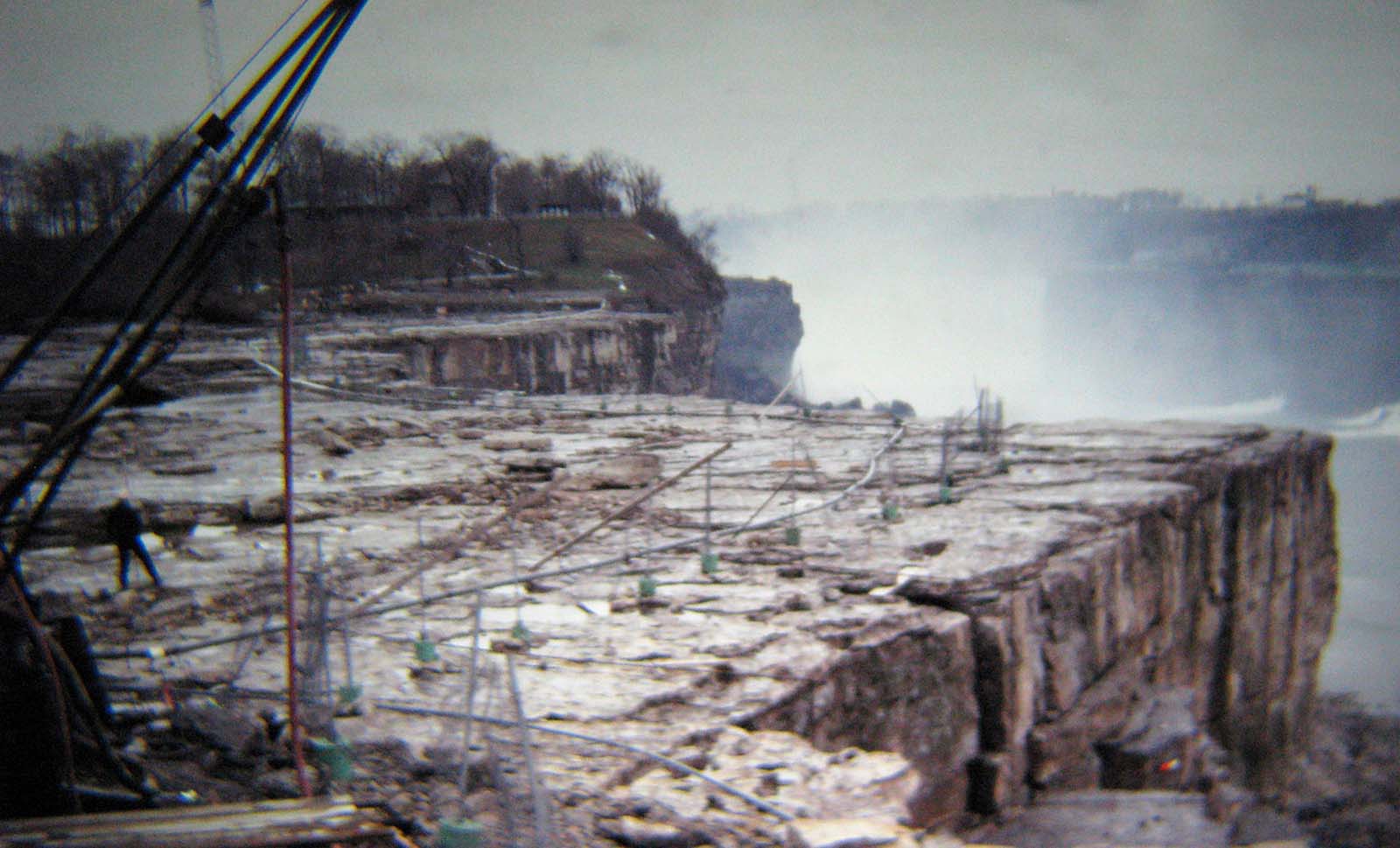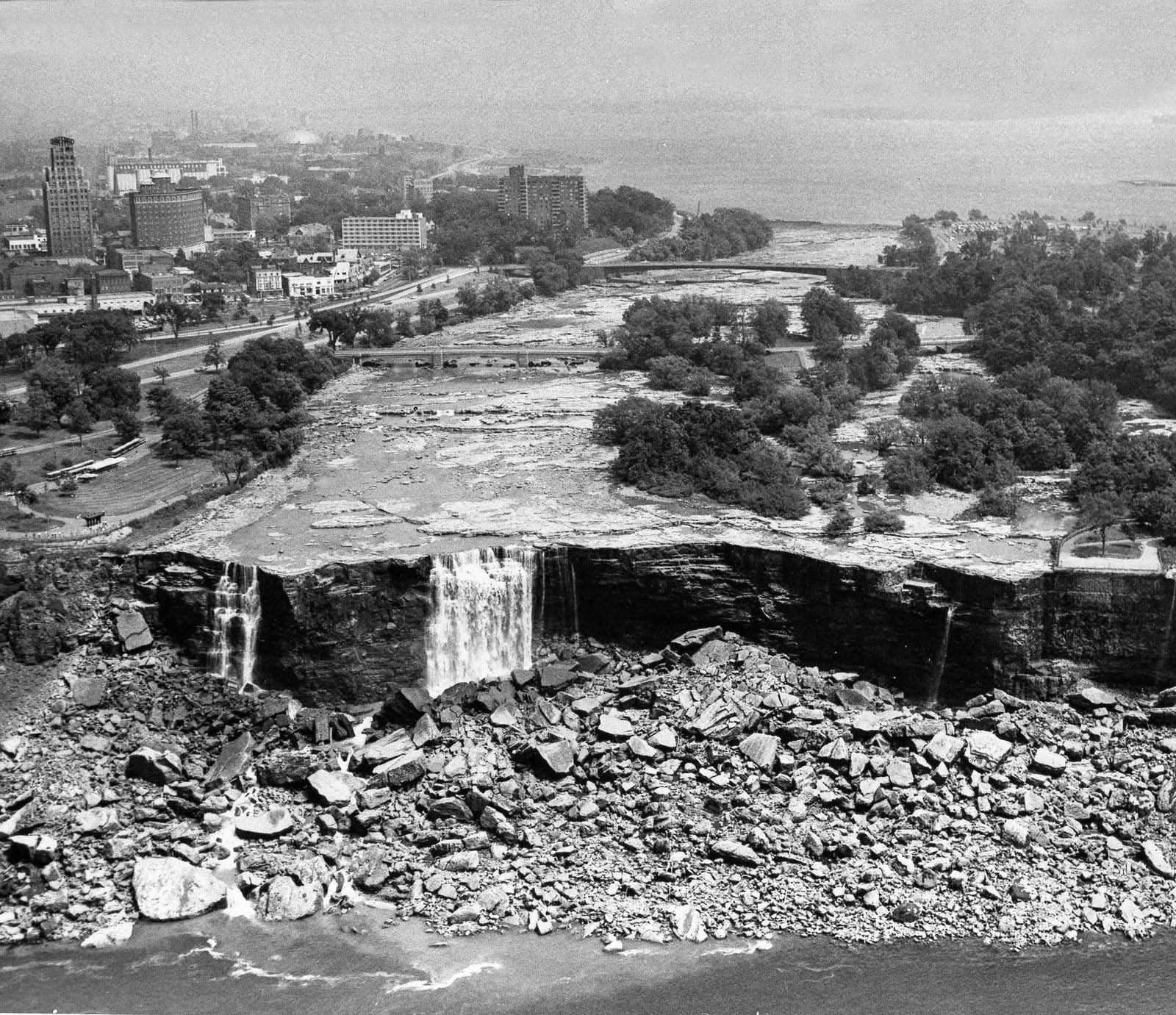Niagara’s American Falls were dewatered for six months during the summer and fall of 1969. Then, as a result of erosion, the Army Corps of Engineers conducted a geological survey of the falls’ rock face. As a result, North America’s most iconic waterfall turned into the desert for few months.
Three waterfalls that span the international boundary between Canada and the United States are known as Niagara Falls. The Horseshoe Falls, American Falls, and Bridal Veil Falls are the three waterfalls of their size. Horseshoe Falls is mainly on the Canadian side, whereas American Falls is entirely on the American side, divided by Goat Island. On the American side is the smaller Bridal Veil Falls, separated from the others by Luna Island.
A dam of 600 feet (182 meters) tall had to be built across the Niagara River to dewater the American Falls. That meant diverting 60,000 gallons of water flowing every second over the massive Horseshoe Falls on the Canadian side of the border.
American Falls, which had flowed continuously for over 12,000 years, stopped in June 1969 after the dam was built out of 27,800 tons of rock. Dewatering of the American Falls was made more accessible because only 10% of the water flows through that route.
The Horseshoe Falls absorbed the extra flow, but the U.S. The Army Corps of Engineers surveyed the riverbed. They mechanically bolted and strengthened any faults they found, faults that would have accelerated the retreat of the American Falls if left unattended. However, the high costs of removing the large pile of talus deposited in 1954 led to the abandonment of the project. During that time, a temporary boardwalk was built only twenty feet from the brink of the dry falls, allowing tourists to experience an otherwise inaccessible and harsh area while workers cleaned the old riverbed of undesired mosses and drilled test cores in search of instabilities.
In November 1969, the temporary dam was dynamited in front of 2,650 onlookers, restoring the flow of the American Falls. However, Luna Island, between the main waterfall and the Bridal Veil, remained a closed area for years despite these investments, fearing that it would collapse into the gorge.
Also, check how Niagara Falls looked like from the 1850s to 1950s.


